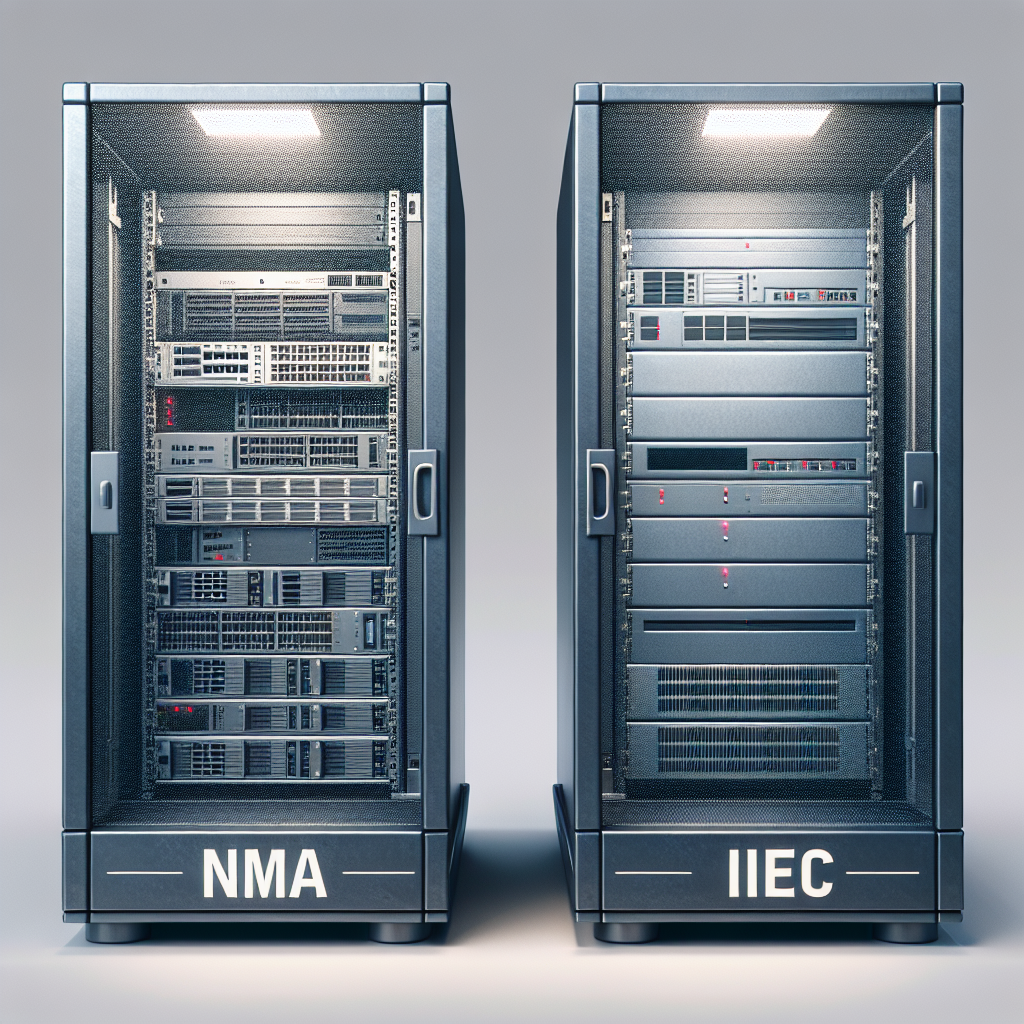In the world of data centers and industrial applications, selecting the right equipment rack is crucial for ensuring operational efficiency and safety. Two prominent standards dominate the market: NEMA (National Electrical Manufacturers Association) and IEC (International Electrotechnical Commission). Understanding the differences between these standards can help organizations make informed decisions tailored to their needs.
| Criteria | NEMA | IEC |
|---|---|---|
| Origin | United States | International |
| Enclosure Ratings | NEMA 1-12 | IP00-IP69K |
| Focus | Environmental Protection | Ingress Protection |
| Applications | Indoor and Outdoor | Primarily Indoor |
| Customization | Numerous Options | Standard Sizes |
Introduction to NEMA and IEC Standards
NEMA and IEC provide guidelines for the design and construction of equipment enclosures, each with its unique perspectives and methodologies.
What is NEMA?
NEMA is a North American standard focused primarily on the environmental protection of electrical equipment. The association publishes guidelines that cover various types of enclosures, ranging from NEMA 1, which offers basic protection, to NEMA 12, which provides advanced protection against dust, water, and other environmental factors.
What is IEC?
IEC is an international standard that defines the levels of protection against solid objects (like dust) and liquids. Its rating system ranges from IP00, which offers no protection, to IP69K, which offers protection against high-pressure, high-temperature water jets.
Deep Dive into NEMA Ratings
NEMA ratings are often used in North America to determine the suitability of enclosures for different environments. These ratings provide detailed criteria for protection against various environmental factors such as dust, dirt, and water.
NEMA Rating Levels
- NEMA 1: Basic indoor protection against accidental contact with the equipment.
- NEMA 3: Outdoor protection against rain, sleet, and dust.
- NEMA 4: Indoor and outdoor protection against splashing water.
- NEMA 4X: Added corrosion resistance for harsh environments.
- NEMA 12: Indoor protection against dust, dirt, and dripping non-corrosive liquids.
Understanding IEC Ingress Protection
IEC standards use an IP rating system to define the level of protection offered by an enclosure. Each IP rating has two numbers: the first digit denotes protection against solids, while the second indicates protection against liquids.
IEC Rating Levels
- IP00: No protection against solids or liquids.
- IP54: Protection against limited dust ingress and water spray from any direction.
- IP65: Dust-tight and protected against water jets.
- IP67: Dust-tight and protected against temporary immersion in water.
- IP69K: Protection against high-pressure, high-temperature water jets.
Applications and Use Cases
Both NEMA and IEC standards have distinct applications and use cases that cater to different environments and requirements.
NEMA Use Cases
NEMA-rated enclosures are often used in industrial settings in North America and are designed for both indoor and outdoor environments. They offer various levels of protection suitable for diverse environments and can be customized for specific needs.
- Industrial plants
- Data centers
- Outdoor telecom units
- Manufacturing facilities
IEC Use Cases
IEC ratings, being more internationally recognized, are commonly used in environments where international standards are required. These are typically indoor applications due to the focus on ingress protection.
- Data centers in international locations
- Indoor telecommunications equipment
- Hospitals and clean rooms
- Laboratory environments
Customization vs. Standardization
NEMA standards offer a high degree of customization to meet specific environmental conditions. In contrast, IEC standards usually come in standardized sizes and specifications, making them easier to implement in environments requiring strict adherence to international guidelines.
NEMA Customization
Customization is a significant advantage of NEMA standards. Users can choose from a wide array of components and features, from basic protection to highly specialized environments.
IEC Standardization
IEC standards are predominantly focused on providing globally recognized specifications, which facilitate easier adoption and implementation across varying international contexts.
Conclusion
Understanding the differences between NEMA and IEC rack standards can greatly impact the choice of enclosures for various applications. NEMA’s focus on environmental protection and customization makes it ideal for North American industrial applications. In contrast, IEC’s standardized ingress protection ratings are better suited for global and indoor applications. By assessing the specific needs of your environment, you can choose the right standard to ensure both operational efficiency and safety.




